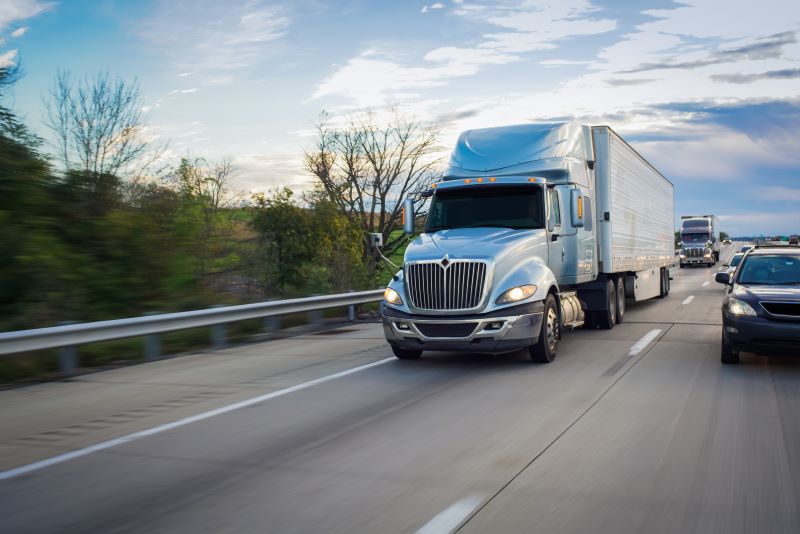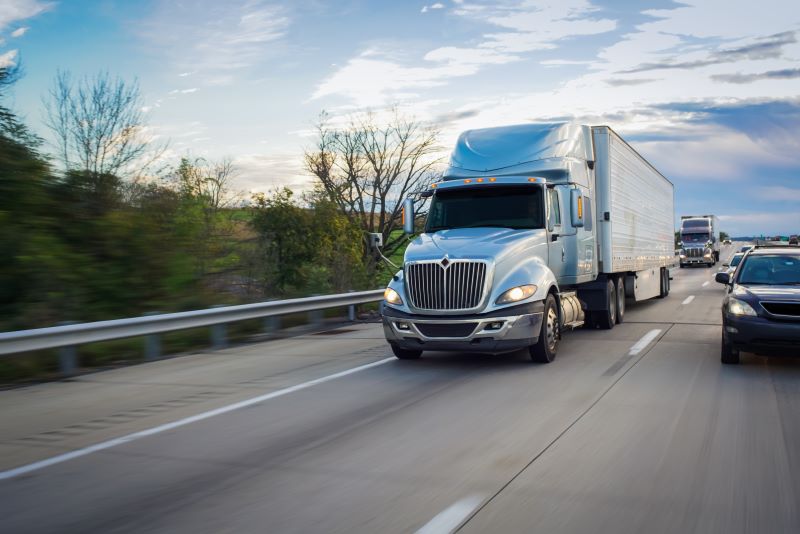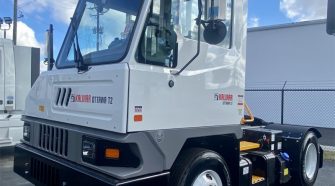

In this article, we’ll discuss the misconception that all semi trucks are sleepers and how sleepers make trucking as a lifestyle much more comfortable. Most semi-truck interiors are alike, but can vary slightly based on the year, make, and model. The noticeable difference is whether a truck has a sleeper cab. A day cab is a truck with no sleeper cab, while a truck with a cabin for sleeping is called a sleeper truck. It’s that simple, and at the end of this article, you’ll be able to spot one quickly.
The history of semi trucks goes back some time. Until the 1970s, drivers preferred a minimalist, bare-bones design–or maybe it was the designers. Now, sleeper cabs can be lavish to maximize the comfort inside semi trucks. In addition, truck designers include more and more amenities as time goes on to enhance modern-day sleeper cabs. Things like TVs, microwaves, refrigerators, and bathrooms are more present inside semi trucks.

Semi Truck Sleepers
If you’ve just started your search, you are in for a treat. There are so many types of sleeper trucks to fit many kinds of hauls and preferences. Let’s start with a few styles that may not fall traditionally under the heading of semi truck sleepers.
For routes requiring about a day of travel, you’ll find that a day cab can serve your needs well. Smaller than sleeper cabs, day cabs are an excellent choice for short-distance, budget-minded hauling. Day cabs and sleeper trucks can both sport a slope-nose or conventional nose. Due to aerodynamics, slope-nosed trucks have a short, rounded front and can haul heavy loads and longer trailers. So, the answer to the question, “Are all semi trucks sleepers?” is generally no, unless you want to sleep in the cockpit of a day cab. Conventional-nosed trucks are not standard on the modern road, but if you do your maintenance, the big, square, non-aerodynamic front offers easy access to the diesel engine.
Types of Sleeper Cabs
Flat-Roof Sleeper
Flat-roof semi truck sleepers are larger and more expensive than comparable rigs. However, despite the size, they have the least headspace compared to mid- and raised-roof sleeper cabs.
Mid-Roof Sleeper
Mid-roof semi truck sleepers have a rounded, higher roof than a flat-roof sleeper, allowing room in the cab for a bed, storage, TV, and extra space to rest.
Raised-Roof Sleeper
Raised-roof semi truck sleepers have the most space inside. Even with some storage, you can still get 12-18 inches of space more than with a mid-roof cab.

Sleeper Trucks
Are all semi trucks sleepers? No, but sleeper trucks offer an excellent range of amenities worth the investment. They save you money in the long run if you’re making long hauls. They even double as an RV if the need arises. You can cook, sleep, or enjoy time relaxing. You can find one with special compartments, like a mini-kitchen, shower, and toilet. Sleeper cabs almost always include insulation to protect you against cold, heat, and sound. When deciding which truck to buy and where to get your truck loan, keep the following five things in mind:
As mentioned, sleeper cabs have insulation to allow restful sleep. But, it is helpful while driving to keep road noise down. You might prefer the insulation in one model or brand over another, so spend some time in different cabs to find out for yourself.
Cabin size can be a double-edged sword–more room inside means more size and weight, impacting your cargo capacity. Also, if your sleeper has special compartments, they’ll probably need water for flushing and dishwashing–don’t forget to calculate the weight of the water tanks. Water tanks can add significant weight.
Your comfort as the driver and occupant is one of the biggest decision-makers. Sleeper trucks are also more spacious and comfortable in the front than day trucks. You’ll spend more of your day in the driver’s seat on long hauls than on daytime delivery routes. You want to consider your comfort in the driver’s seat, while sleeping, and while residing in the back cabin. Test out the bed, go through the motions of making food, and stand in the shower/toilet to see how it feels. Choose the cabin design you’ll be most comfortable living in for long hauls on the road, especially if you’re skipping motel stops.
Ports, tank refill valves, tank drains, and gas tank access should all be easy for you to work with and hook up to the appropriate appliances. If you’ll be living in the sleeper truck often, you want it to be as easy as possible. Get familiar with your truck and the peculiarities you will find outside and inside trucks. If it is not too difficult to create muscle memory with the layout while interacting with a truck, you’ll find it more enjoyable to maintain down the road.

Inside Semi Trucks
It’s not easy hauling over the road for days–let alone weeks. Because of this, another response to the question, “Are all semi trucks sleepers?” is that perhaps they should be in the future. Sleeper truck manufacturers go to great lengths to improve modern sleeper cabs. Many drivers have also gone to great lengths to personalize their cabs. There is a large aftermarket sector specifically for this purpose. People often allot budget amounts to upgrading their homes. So why shouldn’t you do the same to your home-on-wheels?
When traveling with your partner, children, or pets, it’s an excellent idea to consider those passengers when personalizing. They might even love to help. Storage space is understandably limited inside any semi-truck, and you will likely need time to figure out what you need.
As happy as these luxurious sleeper cabs are making drivers, trucking companies also celebrate sleeper trucks for a healthy return on their investments, generated by more comfortable, happy, and driven employees. Companies that care for their drivers experience lower turnover rates, increased engagement, lower collision rates, and more extended career longevity among drivers. So, while not all semi trucks are sleepers, these unique cabs have much more to offer than a twin bed and radio. And, as technology continues to revolutionize many industries worldwide, you can bet that sleepers will only keep getting better and our roads safer.
Search our site
Related posts


How Driverless Trucks Will Benefit Truck Drivers in the Future
Should You Buy or Lease Your Next Semi?


